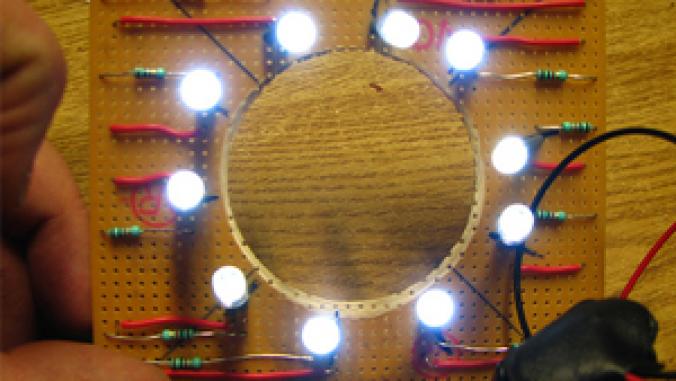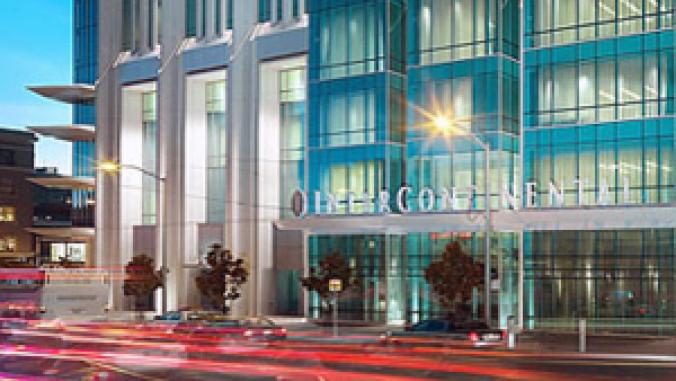Keys to Better Lighting Upgrades
<p>Comprehensive lighting upgrades may take more time and cost more money than one-to-one replacement programs, but the results can be radiant, and cost-effective. By James Piper.</p>
Comprehensive lighting upgrades may take more time and cost more money than one-to-one replacement programs, but the results can be radiant, and cost-effective. By James Piper.
Lighting systems typically account for 25% to 30% of building electricity use. In facilities where lighting systems have not been upgraded over the last 10 to 15 years, lighting energy use can be as high as 40%.
Not surprisingly, practically any lighting upgrade program will reduce lighting energy use. Even the simple one-for-one replacement of existing light sources with new, high-efficiency sources will produce significant savings. But one-for-one replacement programs miss many opportunities to further reduce lighting energy use. Even worse, one-for-one replacement programs can result in poor quality lighting systems and lighting levels that are either too high or too low.
What facility executives need is a comprehensive upgrade plan. While it may take more time, and in some cases more money, to implement a lighting upgrade plan, the benefits far outweigh the initial investment on both counts. A comprehensive upgrade plan can reduce lighting energy use by as much as 50% while improving lighting quality.
The most important step is the one that is most often overlooked: evaluating existing systems. Without a very good understanding of both the condition and performance of existing lighting systems, facility executives will not know how best to apply new technology or where improvements are needed.
The audit identifies and quantifies what is installed in the building, showing both where and when energy is used. It also identifies the types of light sources and their wattage, quantifying the base load for lighting energy use and identifying the potential for savings.
The audit also evaluates existing systems. Most existing fixtures are only 70% to 75% efficient in getting light produced by lamps to where it is needed; with older fixtures and fixtures that are in poor condition, that figure may be no more than 50%. Upgrading the light source in these fixtures makes no sense, given that new fixtures can be 90% efficient.
For each area in the facility, survey the existing lighting systems, recording the number and type of fixtures, the number and type of lamps and ballasts installed, and their condition. Don’t overlook areas such as stairwells, restrooms, mechanical spaces and storage closets. These areas often offer the greatest rates of return.
The Needs Assessment
Simply replacing lights overlooks the reason why the lights were installed in the first place — to support specific operations. Light output and operation must be matched to the needs of the space. And supplying the right lighting level is only half of the battle. To be both cost effective and efficient, the lighting system must supply the light whenever it is needed, but only when it is needed.
Identify operations in each area in the facility. Measure the light level provided by the existing system, and compare that to what is recommended for those activities. And be sure to talk to occupants to determine what they feel their lighting needs are.
The survey should also identify hours of operation for each area, and whether operations are continuous or intermittent. Identify controls that are used beyond the standard wall switch.
Lighting Technologies
Many developments have improved lighting systems, not only have reducing energy requirements, but in many cases also cutting maintenance costs and improving system operation. Improvements come in three major areas: lamps and ballasts, fixture designs, and system controls.
By far the most significant advance has been the use of T8 lamps with electronic ballasts. When used to replace the T12 lamp and magnetic ballast, this combination offers a 30 to 35 percent reduction in energy use with the same light output.
Developments in design are also leading to wider use of compact fluorescent lamps. Today’s lamps come in models that closely match incandescent lamps, making them suitable for practically any application. With energy savings of approximately 75 percent compared to incandescents, and a lifetime that is nearly 10 times as long, compact fluorescent lamps can reduce both energy and maintenance costs.
A frequently overlooked opportunity is exit signs. The large number of exit signs in most buildings combined with 24-hour-a-day, 365-days-a-year operation make them a good candidate for an upgrade.
Most older exit signs use one or two 20-watt incandescent lamps. Newer signs may use one or two 7- or 9-watt fluorescent lamps. But today’s LED exit signs use only 2.5 and 5.0 watts per sign and also offer 100,000 hours of operation, practically eliminating maintenance costs.
In another development, fixtures designed for use with T8 lamps offer an operating efficiency of approximately 90%, a significant improvement over the 70% to 75% rating of older fixtures.
Finally, lighting control systems have undergone a major change. Dimming fluorescent ballasts are now reasonably priced, allowing for widespread use, particularly where daylight can be used instead of the building’s lighting system. In applications where daylight can be used, facility executives find that lighting energy use can be reduced on average by 30% to 35%.
Today’s occupancy sensors offer vast improvement in operation over earlier generation units, greatly reducing the number of false ons and offs. Occupancy sensor controls provide a means of automatically turning off lights when they are not needed. When used in areas of intermittent occupancy, such as private offices, storerooms and conference rooms, they offer reductions in lighting energy use of 25% or more.
Evaluate Potential Savings
The lighting audit and needs assessment will have identified a number of potential upgrade projects, but before any decision is made, each option must be evaluated to determine savings.
In the past, the accepted practice was to calculate energy savings based on the average cost of electricity to the facility. Unfortunately, electricity rate structures have become more complex in recent years. If facility executives want accurate projections, they will have to use the rate structure in effect for a particular facility.
An estimate of the installed cost, annual energy savings and projected payback period will have to be determined. Those that meet a target cutoff point can then be included in the plan. Other projects may still be included if they solve a particularly important problem with lighting.
Since it is unlikely that all projects will be funded at the same time, projects will have to be ranked in order of priority. While energy savings is an important factor in ranking projects, it is not the only one.
For example, the operation of the lighting system interacts with other building systems, such as the HVAC system. Reducing the energy used by the lighting system will reduce the cooling load for the building. If the HVAC system is to be replaced, then it is important to implement as many lighting upgrades as possible before the new HVAC system is installed so that the HVAC system can be properly sized.
Similarly, if dimming fluorescent ballasts are to be installed to take advantage of daylight, that project should be coordinated with any upgrade in windows that would allow daylight to enter the building while blocking infrared radiation.
Lighting upgrade programs have been proving themselves for years now. The real question is what steps facility executives can take to help ensure that an upgrade provides the greatest benefits.
----------------------------
By James Piper PE, PhD, is a consultant and writer with more than 25 years of experience in the facilities field.
Copyright 2001 Building Operating Management, a GreenBiz News Affiliate.




